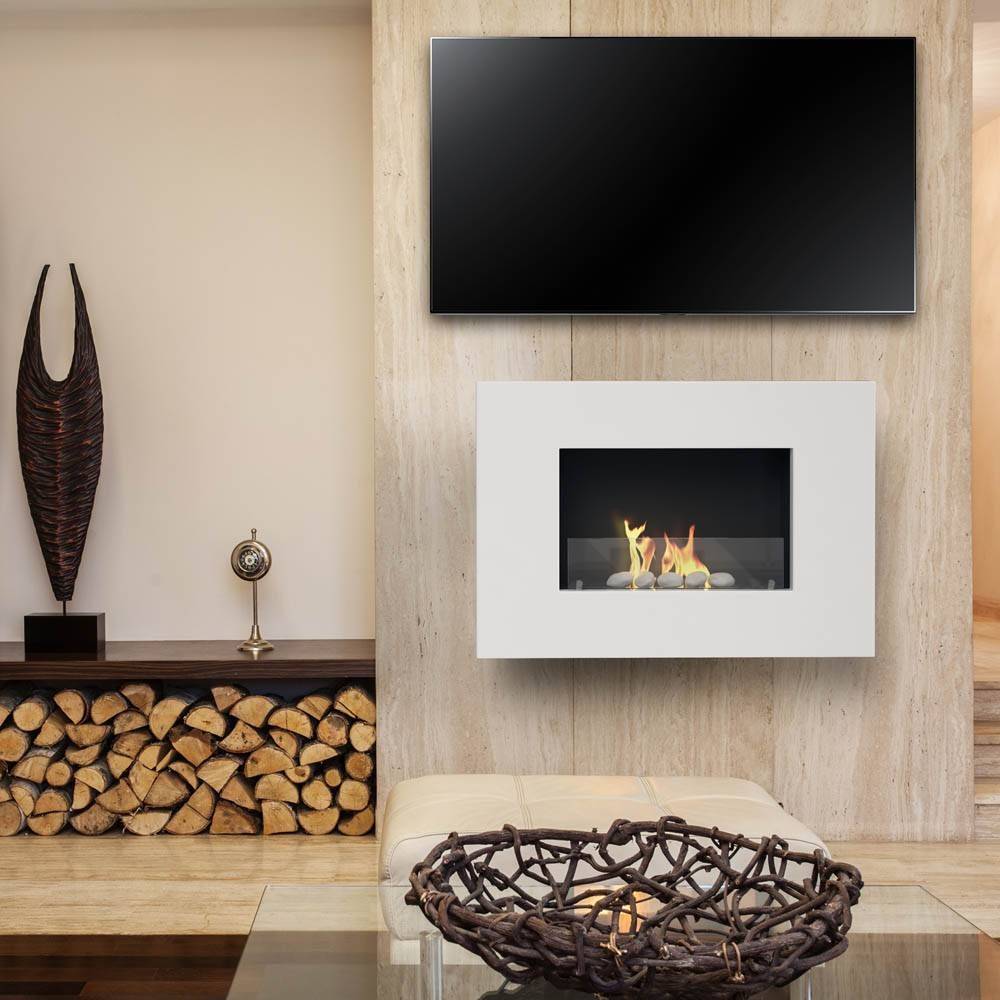
Bioethanol vs Electric Fireplaces: Which Should You Choose?
As the evenings get cooler, the idea of a flickering fire starts to feel even more appealing. But if you’re after a fireplace without the hassle of chimneys, gas lines or heavy maintenance, your shortlist probably includes electric and bioethanol options.
Both are clean, modern and easy to install. So how do you choose?
This guide walks through the differences to help you decide which fireplace is the better fit for your home and lifestyle.
Bioethanol Fireplaces: Pros and Cons

Bioethanol fireplaces use plant-based fuel that burns cleanly. No smoke, no ash, and no flue required. If you're after real flame without the mess of a traditional fireplace, bioethanol is a compelling option.
Let’s take a look at the upsides and a few practical considerations.
Advantages of Bioethanol Fireplaces

Clean and smoke-free
Bioethanol burns without creating smoke or soot. The only by-products are a small amount of carbon dioxide (similar to a few candles) and water vapour. That means no need for ventilation or a chimney and no stains on your walls or ceilings.
Real flame, no fuss
Unlike electric models that simulate fire with LEDs, bioethanol gives you a genuine flame. It flickers, glows, and adds warmth and atmosphere. It’s as close to a traditional fire as you can get without logs or gas.
And it’s safe too. All Imaginfires models meet BS EN 16647 standards and include a spill-resistant fuel box for peace of mind.
Quick to install, easy to live with
Since there’s no chimney or wiring involved, setting up a bioethanol fireplace is straightforward. Many models are freestanding and fully portable: no tools, no drilling, just position and light.
And for that classic log-burner look? Add a magnetic false flue that clicks neatly into place.
Want to skip the wiring and go straight to styling? Explore our freestanding bioethanol fireplaces for instant setup and flexibility.
Portable by design
Want a fire in your lounge tonight and your garden room tomorrow? No problem. Bioethanol fireplaces are made to move with you.
Take a look at our bioethanol fireplaces and see how flexible they really are.
Disadvantages of Bioethanol Fireplaces
The main trade-off is heat output. A typical bioethanol fire produces around 3kWh, which is enough to warm a room but not the whole house. In contrast, a log burner usually puts out between 5 and 8kWh.
That said, bioethanol fires still generate more warmth than electric ones, and many models let you adjust the flame to suit your needs.

Electric Fireplaces: Pros and Cons
Electric fireplaces have come a long way in recent years. With sleeker designs, improved flame effects and plug-and-play simplicity, they’re a solid option for many homes.
Let’s weigh up the benefits and limitations.
Advantages of Electric Fireplaces
No chimney or fuel required
Electric fireplaces run purely on electricity. They create warmth using a fan heater and simulate flame using LED lights. That means no fumes, no maintenance, and no need for ventilation.

Budget-friendly to run
If you're looking for a low-cost heating solution, electric fireplaces are appealing. A 1,000-watt model costs roughly £4.50 per day to operate, depending on your tariff and usage.
To compare:
- Log burner: approx. £10/day
- Bioethanol fireplace: approx. £6/day
Curious how running costs compare over time? See our breakdown of bioethanol fuel usage to help plan your heating budget.
Simple setup, minimal effort
Installation is as easy as plugging it in. Once it’s in place, you can turn it on or off with the push of a button. No refuelling, no cleaning, no flame management.
Disadvantages of Electric Fireplaces

No real flame
While modern electric fires can look convincing, they’re still digital flame effects. You don’t get the heat, movement or atmosphere of a real fire.
Needs electricity to run
If your power goes out, so does your fireplace. For some people, that’s not a dealbreaker. But if you want something more reliable during outages, bioethanol might be a better choice.
Lower heat output
Electric fireplaces generally top out at 2kWh, which is fine for smaller spaces but may feel underpowered in larger or open-plan rooms.
Bioethanol vs Electric: Key Differences at a Glance
|
Feature |
Bioethanol |
Electric |
|
Flame type |
Real flame |
LED flame effect |
|
Heat output |
Around 3kWh |
Up to 2kWh |
|
Fuel type |
Bioethanol liquid |
Electricity |
|
Ventilation needed |
No |
No |
|
Installation |
Freestanding or wall-mounted |
Plug-in or wall-mounted |
|
Portability |
High |
Low to moderate |
|
Runs during power cut |
Yes |
No |
So, Which One Should You Choose?
It comes down to what you value most.
Choose an electric fireplace if you want:
- Simple plug-in setup
- Visual flame effect with no open flame
- The lowest possible running cost
Choose a bioethanol fireplace if you prefer:
- A real flame and natural warmth
- Greater flexibility in placement
- A stylish, clean-burning design that feels like a real fire
Both are solid alternatives to wood-burning or gas fires, but if you’re after flame realism and freedom to place your fire where it suits you, bioethanol offers a more authentic experience.

Ready to explore your options? Browse our bioethanol fireplace collection and find one that fits your home.
